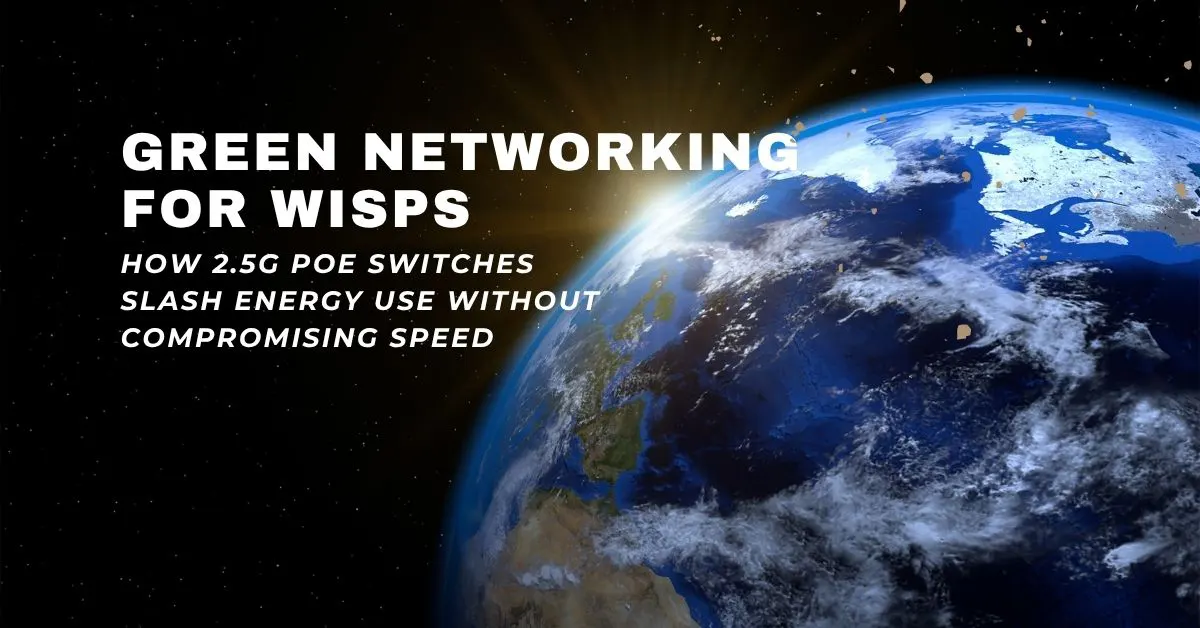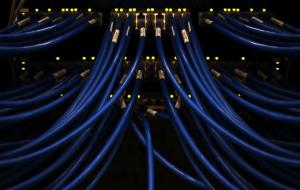For Wireless Internet Service Providers (WISPs) operating in rural and off-grid areas, energy efficiency is more than a cost concern—it’s a deployment necessity. With limited access to stable power and growing pressure to adopt greener practices, WISPs must rethink how they build and power their networks. Enter the 2.5G PoE switch: a powerful yet efficient solution that delivers high-speed performance while dramatically cutting energy usage.
The Power Problem in Rural and Off-Grid WISP Deployments
Unlike urban networks, rural WISP setups often rely on solar panels, batteries, or remote generators. Every watt saved can translate into longer uptime, smaller batteries, and lower operating costs. However, traditional network switches—even low-end ones—can consume significant power, especially when paired with PoE devices like radios, cameras, and access points.
This power consumption adds up quickly, limiting scalability and increasing complexity in off-grid environments. For WISPs working at the edge, the challenge is clear: how to deliver reliable, high-speed connectivity with a minimal energy footprint.
2.5G PoE Switches Reduce Energy Waste with Intelligent Power Budgeting
Modern 2.5G PoE switches are engineered with smarter energy use in mind. Many m
odels support intelligent power budgeting, which allocates power dynamically based on the needs of each connected device. This avoids over-provisioning and minimizes waste—especially important when powering mixed loads of radios, antennas, and other gear.
By using a 2.5G PoE switch with active monitoring and efficient voltage regulation, WISPs can ensure power is delivered only when needed and in the right amounts—no more, no less. The result: optimized energy use and longer-lasting power systems.
Higher Port Density Means Fewer Switches and Less Power
One of the key benefits of 2.5G switches is their ability to move more data through fewer devices. With multi-gigabit speeds and higher port density per unit, WISPs can often reduce the number of switches deployed per tower or relay site.
Fewer switches mean fewer power supplies, fewer enclosures, and less hardware to cool or protect. This consolidation directly lowers power consumption and simplifies network design, particularly in compact or solar-powered enclosures where space and energy are both limited.
Supporting Solar-Powered and Low-Carbon Infrastructure
As the world shifts toward renewable energy and sustainable practices, WISPs are increasingly incorporating solar and hybrid power into their network planning. 2.5G PoE switches are a natural fit for these initiatives, combining low power draw with robust performance.
When paired with efficient radios and smart power systems, these switches can help WISPs build green network nodes that operate autonomously in remote environments—without sacrificing bandwidth or reliability. For rural communities, this means faster internet that’s both sustainable and scalable.
Conclusion
2.5G PoE switches represent a key advancement in energy-efficient networking for WISPs. By combining high-speed performance with smart power management and reduced hardware needs, they enable greener deployments that are ideal for off-grid and rural environments. As demand for sustainable infrastructure grows, these switches provide the foundation for networks that are fast, reliable, and built with the future in mind.
Upgrade now and prepare your WISP for the future of high-speed networking!



